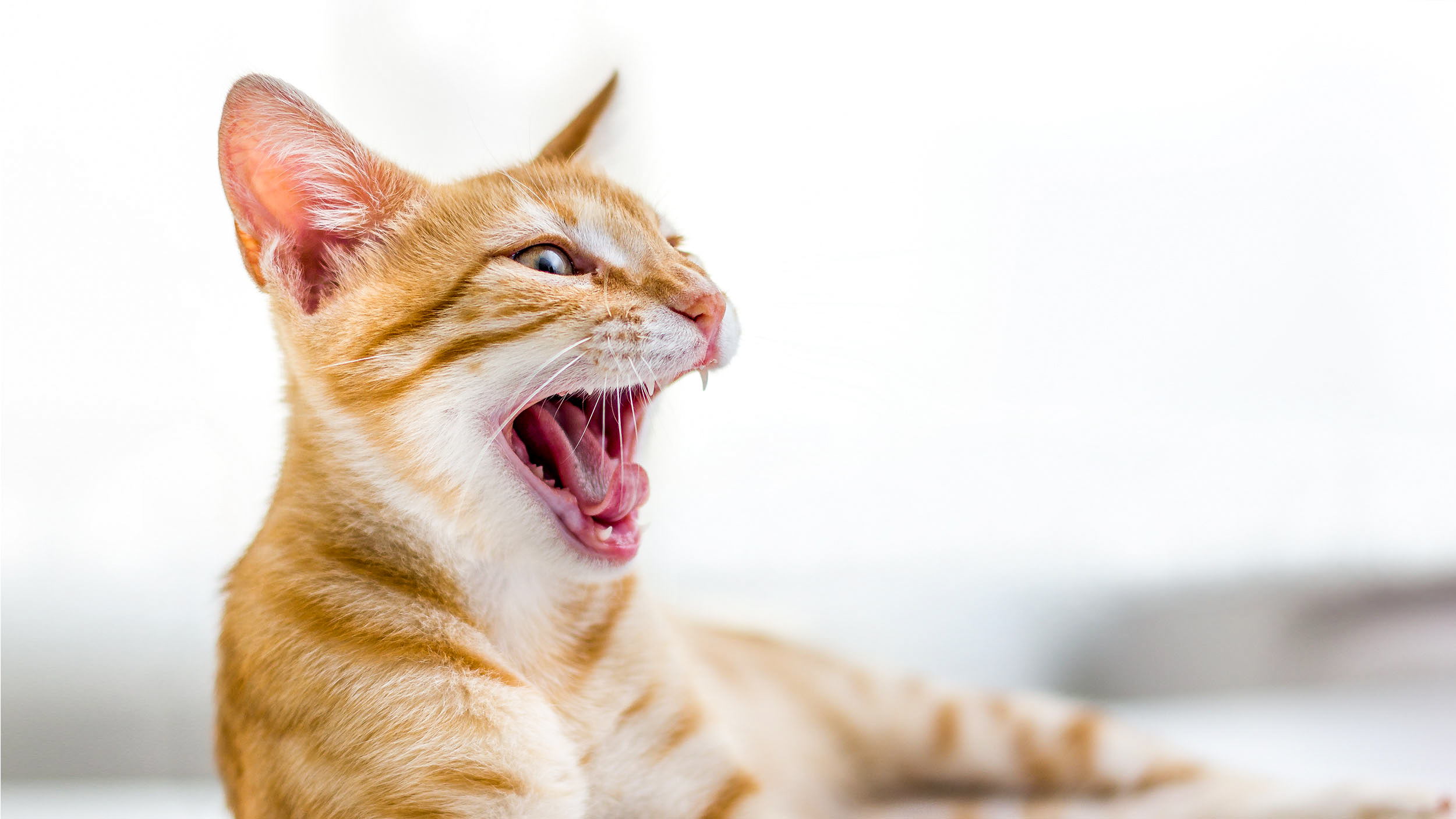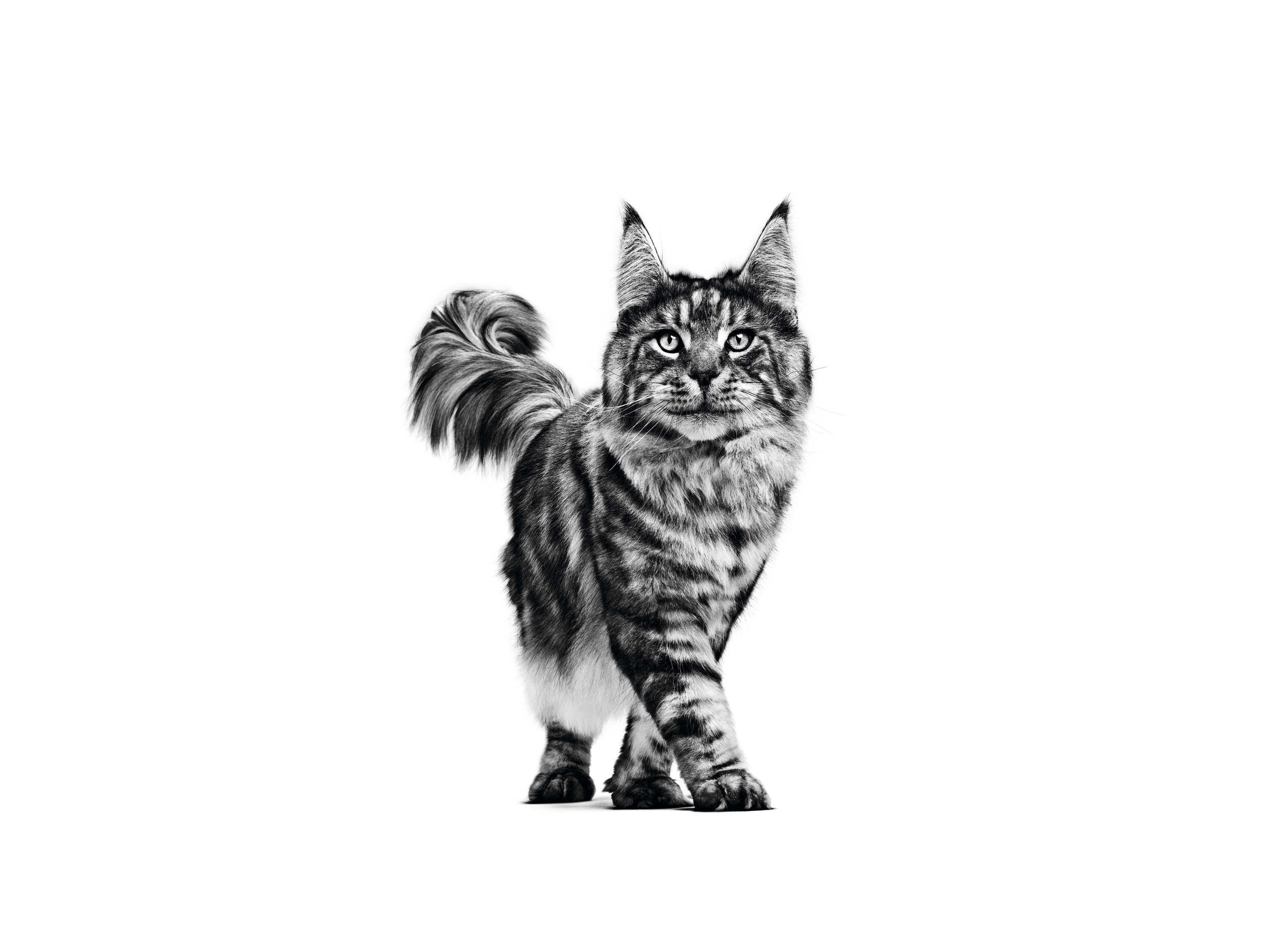The symptoms of digestive problems in your cat

When it comes to digestive problems, cats can suffer from multiple issues caused by lots of different things – so knowing how to recognise the signs of a digestive issue can be helpful.
Your cat has difficulty eating or swallowing
If your cat has an obstruction in their esophagus (such as a hairball), or the muscles of their esophagus or stomach aren’t functioning properly, your might notice they have difficulty eating or swallowing.
You’ll notice they seem reluctant to eat – which may be painful – and when they do it can be difficult or strained. They may regurgitate food; this is where they passively bring up food, normally soon after they’ve eaten and without any warning. They may cough, caused by undigested food lodged in their esophagus.
Your cat is vomiting or has hairballs
It’s not unusual for cats to occasionally vomit, particularly if they have eaten something their body identifies as harmful. Frequent vomiting, twice a month or more, can be an indicator of a more serious problem, such as an infection, inflammatory disease or ulcer, however cats vomit for a variety of reasons. When your cat vomits, they will bring up food that has been partially digested in the stomach or bile, often quite some time after eating. This is different to regurgitation, which is a more passive, immediate reaction.
If your cat regurgitates a compact, matted lump of hair, it may be suffering with hairballs. These are caused when excess hair ingested through grooming sticks together in your cat’s digestive tract. Normally, your cat would digest and pass out these hairs, but if there are too many its body can’t do this and hairballs are formed. While long-haired cats may be more susceptible, this is a particular problem with indoor cats, as they spend much more time grooming themselves than outdoor cats. Some cats will not have a fully formed hairball but will have hair in their vomit.

Your cat has diarrhoea
Like vomiting, diarrhoea can be indicators of a broader illness which is affecting your cat. Vets make the distinction between large intestine and small intestine diarrhoea, characterised by different symptoms and with different causes.
If your cat has large intestinal diarrhoea, their stools will tend to be of the same volume or less than usual at one time, but more frequent than normal, but often include blood or mucus. You may also notice their stools are softer at the end of the day. Your cat will also exhibit a need to move its bowels urgently and frequently.
Small intestinal diarrhoea in your cat tends to be of a large volume at one time, can have colour variation such as green or orange, and may include undigested food. Your cat may also be suffering with vomiting, weight loss and flatulence.
One of the difficulties of checking your cat’s stools is that your cat may tend to go outside to evacuate its bowels. If this is the case, check whether your cat has faeces around its anus, as this can be an indicator of diarrhoea, and monitor how often it goes outside.
If you notice your cat exhibiting any of these symptoms, it’s important to take them to a vet so the cause of the problem can be identified and properly treated. Many digestive issues can be alleviated or managed with the right diet, so ask your vet for advice on the best food to give your cat to support their digestive health.
Related Articles

Find a vet
If you have any concerns about your cat’s health, consult a vet for professional advice.
Like & share this page with your friends & family